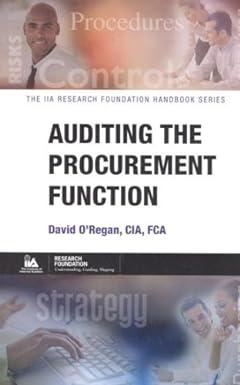Question
DevonDevon Beverages manufactures its own juice bottlesjuice bottles. The bottles are made from polyethylene terephthalate (PET), a lightweight yet strong plastic. DevonDevon uses as much
|
|
DevonDevon
Beverages manufactures its own
juice bottlesjuice bottles.
The bottles are made from polyethylene terephthalate (PET), a lightweight yet strong plastic.
DevonDevon
uses as much PET recycled resin pellets in its bottles as it can, both because using recycled PET helps
DevonDevon
to meet its sustainability goals and because recycled PET is less expensive than virgin PET.
DevonDevon
is continuing to search for ways to reduce its costs and its impact on the environment. PET plastic is melted and blown over
juice bottlejuice bottle
molds to produce the bottles. One idea
DevonDevon's
engineers have suggested is to retrofit the
juice bottlejuice bottle
molds and change the plastic formulation slightly so that
2525%
less PET plastic is used for each bottle. The average kilograms of PET per
juice bottlejuice bottle
before any redesign is
0.0120.012
kg. The cost of retrofitting the
juice bottlejuice bottle
molds will result in a one-time charge of
$ 194 comma 271$194,271,
while the plastic reformulation will cause the average cost per kilogram of PET plastic to change from
$ 6.00$6.00
to
$ 6.20$6.20.
DevonDevon's
management is analyzing whether the change to the bottle molds to reduce PET plastic usage should be made. Management expects the following number of
juice bottlesjuice bottles
to be used in the upcoming year.
|
| Quarter 1 | Quarter 2 | Quarter 3 | Quarter 4 |
| Number of juice bottles to be produced | 3,300,000 | 2,000,000 | 3,100,000 | 3,200,000 |
For the upcoming year, management expects the beginning inventory of PET to be
3 comma 9603,960
kilograms, while ending inventory (before any redesign) is expected to be
4 comma 3404,340
kilograms. During the first three quarters of the year, management wants to keep the ending inventory of PET at the end of each quarter equal to
1010%
of the following quarter's PET needs.
| 1. | Using the original data (before any redesign of juice bottlesjuice bottles), prepare a direct materials budget to calculate the cost of PET purchases in each quarter for the upcoming year and for the year in total. |
| 2. | Assume that the company retrofits the juice bottlejuice bottle molds and changes the plastic formulation slightly so that less PET plastic is used in each bottle. Now prepare a direct materials budget to calculate the cost of PET purchases in each quarter for the upcoming year and for the year in total for this possible scenario. |
| 3. | Compare the cost of PET plastic for Requirement 1 (original data) and for Requirement 2 (making change to using less PET.) What is the direct material cost savings from making the change to using less PET? Compare the total of those savings to the cost of retrofitting the juice bottlejuice bottle molds. Should the company make the change? Explain your rationale. |
Step by Step Solution
There are 3 Steps involved in it
Step: 1

Get Instant Access to Expert-Tailored Solutions
See step-by-step solutions with expert insights and AI powered tools for academic success
Step: 2

Step: 3

Ace Your Homework with AI
Get the answers you need in no time with our AI-driven, step-by-step assistance
Get Started


